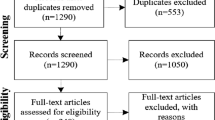Abstract
Developers base selection of a User Interface (UI) development approach on functionality, development and maintenance costs, usability, responsiveness, etc. User expectations continue to grow for greater functionality and continuous interactivity, extending demands on computational resources. To facility scale, recent approaches push more UI computation to clients. Such client-side delegation of functionality increase, continuous usage, and localized computation create ever-growing energy demands, which may negatively impact battery life on mobile platforms. Nonetheless, developers given little attention to the power demands aspects of UI framework selection. We evaluate the impact of contemporary UI framework selection on resource utilization and energy consumption. We suggest an alternative delivery approach designed to preserve low energy demands on clients while still allowing offloading of computation from server to client. Our work focuses on web-based mobile applications; however, we believe our approach to energy demand reduction and framework evaluation to be generally applicable.
Similar content being viewed by others
Notes
11 text inputs, 4 select menus, 3 dates, 3 radio options, 1 checkbox.
References
Balme, L., Demeure, A., Barralon, N., Coutaz, J., Calvary, G.: Cameleon-rt: a software architecture reference model for distributed, migratable, and plastic user interfaces. Ambient Intell. 3295, 291–302 (2004). http://www.springerlink.com/content/p27tmcvqw24r2ljj
Bures, M.: Framework for assessment of web application automated testability. In: Proceedings of the 2015 Research in Adaptive and Convergent Systems, pp. 512–514. ACM (2015)
Burns, E., Griffin, N.: JavaServer Faces 2.0, The Complete Reference, 1st edn. McGraw-Hill, Inc., New York (2010)
Carroll, A., Heiser, G.: An analysis of power consumption in a smartphone. In: Proceedings of the 2010 USENIX Conference on USENIX Annual Technical Conference, USENIXATC’10, pp. 21–21. USENIX Association, Berkeley, (2010). http://dl.acm.org/citation.cfm?id=1855840.1855861
Cerny, T., Cemus, K., Donahoo, M.J., Song, E.: Aspect-driven, data-reflective and context-aware user interfaces design. Appl. Comput. Rev. 13(4), 53–65 (2013)
Cerny, T., Donahoo, M.J.: Impact of remote user interface design and delivery on energy demand. In: 2nd International Conference on Information Science and Security (ICISS), pp. 1–4. IEEE, Prague (2015)
Cerny, T., Donahoo, M.J.: On separation of platform-independent particles in user interfaces. Clust. Comput. 18, 1215–1228 (2015). doi:10.1007/s10586-015-0471-7
Cerny, T., Macik, M., Donahoo, J., Janousek, J.: On distributed concern delivery in user interface design. Comput. Sci. Inf. Syst. 12(2), 655–681 (2015). doi:10.2298/CSIS141202021C
Dayarathna, M., Wen, Y., Fan, R.: Data center energy consumption modeling: a survey. IEEE Commun. Surv. Tutor. 18(1), 732–794 (2016). doi:10.1109/COMST.2015.2481183
Freeman, A.: Pro AngularJS, 1st edn. Apress, Berkely (2014)
Gamma, E., Helm, R., Johnson, R., Vlissides, J.: Design Patterns: Elements of Reusable Object-Oriented Software. Addison-Wesley Longman Publishing Co. Inc, Boston (1995)
Hanson, R., Tacy, A.: GWT in Action: Easy Ajax with the Google Web Toolkit. Manning Publications Co., Greenwich (2007)
Johnsson, B., Akenine-Möller, T.: Measuring per-frame energy consumption of real-time graphics applications. J. Comput. Graph. Tech. (JCGT) 3(1), 60–73 (2014). http://jcgt.org/published/0003/01/03/
Karu, M.: A textual domain specific language for user interface modelling. In: Emerging Trends in Computing, Informatics, Systems Sciences, and Engineering. Lecture Notes in Electrical Engineering, vol. 151, pp. 985–996. Springer, New York (2013). doi:10.1007/978-1-4614-3558-7_84
Kennard, R., Edmonds, E., Leaney, J.: Separation anxiety: stresses of developing a modern day separable user interface. In: Proceedings of the 2nd conference on Human System Interactions, HSI’09, pp. 225–232. IEEE Press, Piscataway (2009). http://portal.acm.org/citation.cfm?id=1689359.1689399
Kiczales, G., Irwin, J., Lamping, J., Loingtier, J.M., Lopes, C.V., Maeda, C., Mendhekar, A.: Aspect-oriented programming. In: IECOOP’97-Object-Oriented Programming, 11th European Conference, vol. 1241, pp. 220–242. Springer, New York (1997)
Kim, M., Ju, Y., Chae, J., Park, M.: A simple model for estimating power consumption of a multicore server system. Int. J. Multimed. Ubiquitous Eng. 9(2), 153–160 (2014)
Lehmann, G., Blumendorf, M., Albayrak, S.: Development of context-adaptive applications on the basis of runtime user interface models. In: Proceedings of the 2nd ACM SIGCHI Symposium on Engineering Interactive Computing Systems, EICS ’10, pp. 309–314. ACM, New York (2010). doi:10.1145/1822018.1822068
Limbourg, Q., Vanderdonckt, J., Michotte, B., Bouillon, L., López-Jaquero, V.: USIXML: a language supporting multi-path development of user interfaces engineering human computer interaction and interactive systems. In: Bastide, R., Palanque, P., Roth, J. (eds.) Engineering Human Computer Interaction and Interactive Systems, Lecture Notes in Computer Science, pp. 134–135. Springer, Berlin (2005). doi:10.1007/11431879_12
López-Jaquero, V., Montero, F., Real, F.: Designing user interface adaptation rules with t: Xml. In: Proceedings of the 14th International Conference on Intelligent User Interfaces, IUI ’09, pp. 383–388. ACM, New York (2009). doi:10.1145/1502650.1502705
Macik, M., Cerny, T., Slavik, P.: Context-sensitive, cross-platform user interface generation. J. Multimodal User Interfaces 8(2), 217–229 (2014). doi:10.1007/s12193-013-0141-0
Minas, L., Ellison, B.: The Problem of Power Consumption in Servers. Intel Press, Hillsboro (2009)
Mogul, J.C.: The case for persistent-connection http. SIGCOMM Comput. Commun. Rev. 25(4), 299–313 (1995). doi:10.1145/217391.217465
Schlee, M., Vanderdonckt, J.: Generative programming of graphical user interfaces. In: Proceedings of the working conference on Advanced visual interfaces, AVI ’04, pp. 403–406. ACM (2004). doi:10.1145/989863.989936
Varaksin, O., Caliskan, M.: PrimeFaces Cookbook. Packt Publishing, Birmingham (2013)
Wu, J.H., Shin, S.S., Chien, J.L., Chao, W.: An extended mda method for user interface modeling and transformation. In: Osterle H., Schelp J., Winter R. (eds) Fifteenth European Conference on Information Systems, IHsieh M-C (2007), pp. 1632–1642. (2007)
Acknowledgments
This work was supported by the Grant Agency of the Czech Technical University in Prague, Grant No. SGS14/198/OHK3/3T/13.
Author information
Authors and Affiliations
Corresponding author
Rights and permissions
About this article
Cite this article
Cerny, T., Donahoo, M.J. On energy impact of web user interface approaches. Cluster Comput 19, 1853–1863 (2016). https://doi.org/10.1007/s10586-016-0665-7
Received:
Accepted:
Published:
Issue Date:
DOI: https://doi.org/10.1007/s10586-016-0665-7




